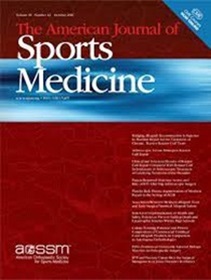Effects of Resistance Training Volume on Physical Function, Lean Body Mass and Lower-Body Muscle Hypertrophy and Strength in Older Adults: A Systematic Review and Network Meta-analysis of 151 Randomised Trials.
IF 9.3
1区 医学
Q1 SPORT SCIENCES
引用次数: 0
Abstract
BACKGROUND The optimal prescription and precise recommendations of resistance training volume for older adults is unclear in the current literature. In addition, the interactions between resistance training volume and program duration as well as physical health status remain to be determined when assessing physical function, muscle size and hypertrophy and muscle strength adaptations in older adults. OBJECTIVES This study aimed to determine which resistance training volume is the most effective in improving physical function, lean body mass, lower-limb muscle hypertrophy and strength in older adults. Additionally, we examined whether effects were moderated by intervention duration (i.e. short term, < 20 weeks; medium-to-long term, ≥ 20 weeks) and physical health status (i.e. physically healthy, physically impaired, mixed physically healthy and physically impaired; PROSPERO identifier: CRD42023413209). METHODS CINAHL, Embase, LILACS, PubMed, Scielo, SPORTDiscus and Web of Science databases were searched up to April 2023. Eligible randomised trials examined the effects of supervised resistance training in older adults (i.e. ≥ 60 years). Resistance training programs were categorised as low (LVRT), moderate (MVRT) and high volume (HVRT) on the basis of terciles of prescribed weekly resistance training volume (i.e. product of frequency, number of exercises and number of sets) for full- and lower-body training. The primary outcomes for this review were physical function measured by fast walking speed, timed up and go and 6-min walking tests; lean body mass and lower-body muscle hypertrophy; and lower-body muscle strength measured by knee extension and leg press one-repetition maximum (1-RM), isometric muscle strength and isokinetic torque. A random-effects network meta-analysis was undertaken to examine the effects of different resistance training volumes on the outcomes of interest. RESULTS We included a total of 161 articles describing 151 trials (n = 6306). LVRT was the most effective for improving timed up and go [- 1.20 standardised mean difference (SMD), 95% confidence interval (95% CI): - 1.57 to - 0.82], 6-min walk test (1.03 SMD, 95% CI: 0.33-1.73), lean body mass (0.25 SMD, 95% CI: 0.10-0.40) and muscle hypertrophy (0.40 SMD, 95% CI: 0.25-0.54). Both MVRT and HVRT were the most effective for improving lower-limb strength, while only HVRT was effective in increasing fast walking speed (0.40 SMD, 95% CI: - 0.57 to 0.14). Regarding the moderators, our results were independent of program duration and mainly observed for healthy older adults, while evidence was limited for those who were physically impaired. CONCLUSIONS A low resistance training volume can substantially improve healthy older adults' physical function and benefits lean mass and muscle size independently of program duration, while a higher volume seems to be necessary for achieving greater improvements in muscle strength. A low volume of resistance training should be recommended in future exercise guidelines, particularly for physically healthy older adults targeting healthy ageing.阻力训练量对老年人身体机能、瘦体重、下半身肌肉肥大和力量的影响:对 151 项随机试验的系统回顾和网络元分析》。
背景目前的文献还不清楚老年人阻力训练量的最佳处方和精确建议。此外,在评估老年人的身体功能、肌肉尺寸和肥大以及肌肉力量适应性时,阻力训练量与计划持续时间以及身体健康状况之间的相互作用仍有待确定。目的:本研究旨在确定哪种阻力训练量对改善老年人的身体功能、瘦体重、下肢肌肉肥大和力量最有效。此外,我们还研究了干预持续时间(即短期,< 20 周;中长期,≥ 20 周)和身体健康状况(即身体健康、身体受损、身体健康和身体受损混合;PROSPERO 标识符)是否会调节效果:方法检索SCINAHL、Embase、LILACS、PubMed、Scielo、SPORTDiscus 和 Web of Science 数据库,截止日期为 2023 年 4 月。符合条件的随机试验研究了老年人(即年龄≥ 60 岁)在监督下进行阻力训练的效果。根据每周规定的全身和下半身阻力训练量(即频率、练习次数和组数的乘积)的三等分,将阻力训练计划分为低量(LVRT)、中量(MVRT)和高量(HVRT)。本综述的主要结果包括:通过快走速度、定时上下楼和 6 分钟步行测试测量的身体功能;瘦体重和下半身肌肉肥大;以及通过伸膝和压腿单次重复最大值(1-RM)、等长肌力和等动扭矩测量的下半身肌肉力量。我们进行了随机效应网络荟萃分析,以研究不同阻力训练量对相关结果的影响。结果我们共收录了 161 篇文章,描述了 151 项试验(n = 6306)。LVRT 对改善定时起立[- 1.20 标准化平均差(SMD),95% 置信区间(95% CI):- 1.57 至 - 0.82]、6 分钟步行测试(1.03 SMD,95% CI:0.33-1.73)、瘦体重(0.25 SMD,95% CI:0.10-0.40)和肌肉肥大(0.40 SMD,95% CI:0.25-0.54)最有效。MVRT和HVRT对提高下肢力量最有效,而只有HVRT对提高快走速度有效(0.40 SMD,95% CI:- 0.57至0.14)。结论小量阻力训练可显著改善健康老年人的身体机能,有益于瘦体重和肌肉大小,不受训练时间长短的影响,而要更大程度地改善肌肉力量,似乎需要更大的训练量。在未来的运动指南中,应推荐低量阻力训练,尤其是针对身体健康的老年人,以实现健康老龄化为目标。
本文章由计算机程序翻译,如有差异,请以英文原文为准。
求助全文
约1分钟内获得全文
求助全文
来源期刊

Sports Medicine
医学-运动科学
CiteScore
18.40
自引率
5.10%
发文量
165
审稿时长
6-12 weeks
期刊介绍:
Sports Medicine focuses on providing definitive and comprehensive review articles that interpret and evaluate current literature, aiming to offer insights into research findings in the sports medicine and exercise field. The journal covers major topics such as sports medicine and sports science, medical syndromes associated with sport and exercise, clinical medicine's role in injury prevention and treatment, exercise for rehabilitation and health, and the application of physiological and biomechanical principles to specific sports.
Types of Articles:
Review Articles: Definitive and comprehensive reviews that interpret and evaluate current literature to provide rationale for and application of research findings.
Leading/Current Opinion Articles: Overviews of contentious or emerging issues in the field.
Original Research Articles: High-quality research articles.
Enhanced Features: Additional features like slide sets, videos, and animations aimed at increasing the visibility, readership, and educational value of the journal's content.
Plain Language Summaries: Summaries accompanying articles to assist readers in understanding important medical advances.
Peer Review Process:
All manuscripts undergo peer review by international experts to ensure quality and rigor. The journal also welcomes Letters to the Editor, which will be considered for publication.
 求助内容:
求助内容: 应助结果提醒方式:
应助结果提醒方式:


